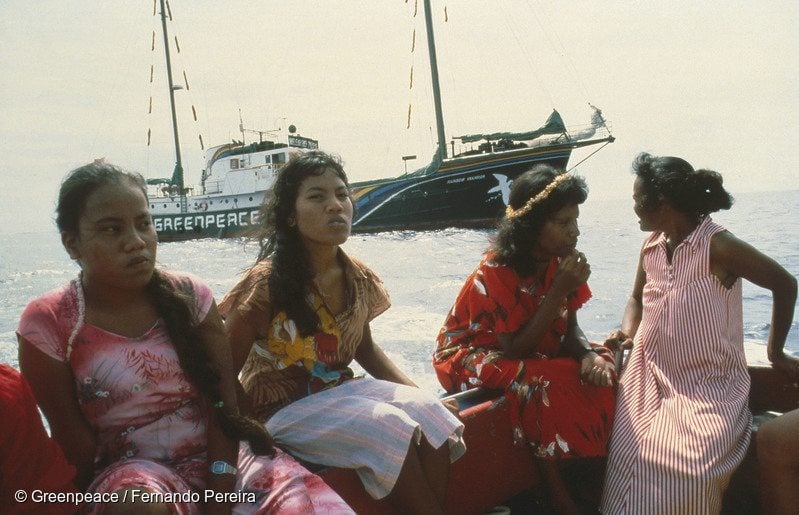Nuclear Testing Poisons an Island
A 1991 study by the International Physicians for the Prevention of Nuclear War (IPPNW) estimated that the radiation and radioactive materials from atmospheric testing taken in by people up until the year 2000 would cause 430,000 cancer deaths. Nuclear testing releases radiation that lingers in the environment and can be absorbed into the body.
Since 1945, most of the world has lived in fear of nuclear war, but for many Pacific Islanders from 1948 to 1956, nuclear war was a reality. In the 8 years of atmospheric nuclear testing at Bikini Atoll, fall out from 66 fission and hydrogen bombs had rained down on their region.
On March 1, 1954, the United States exploded a hydrogen bomb, codename Bravo. At 15 megatons, Bravo was a thousand times more powerful than “Little Boy,” the bomb dropped on Hiroshima.
Both Bikini and Enewetak’s native islanders were evacuated from their island homes prior to the nuclear tests, hoping to avoid radioactive fallout. But, the inhabitants of Rongelap 150 kilometers away were not so fortunate.
Within four hours of the explosion, fallout from Bravo was settling on the island. A fine white ash landed on the heads and bare arms of people standing in the open. It dissolved into water supplies and drifted into houses.
U.S. Government Conspicuously Absent
By 1957, the U.S. government deemed Rongelap safe for habitation. However, the rate of miscarriage among women who lived there would be more than twice that of women who had never been exposed to such high levels of radiation.
A group of scientists were contracted to investigate whether the island was safe. As it turned out, the Brookhaven National Laboratory’s public statement was that the levels of radiation are perfectly safe for human habitation, but they went on to say that leaving people on the island “will afford valuable radiation data on human beings.”
For this reason, many Marshallese believe the Rongelap Islanders were used by the US as ‘guinea pigs’ to study the effects of radioactive fallout on humans. The Islanders had often asked the U.S. government for evacuation, but their pleas fell on deaf ears.
Greenpeace Leads Operation Exodus
At the request of Rongelap’s representative to the Marshall Islands parliament, Greenpeace agreed to take on the task of evacuating the entire population to the safer island of Mejato 180 kilometers away.
Operation Exodus was a major departure for Greenpeace; this was not a traditional Greenpeace style protest. There were no inflatables or banners to hang, just the logistic challenge of moving an entire population 180 kilometers in the Pacific.
When the Rainbow Warrior arrived at the seemingly idyllic tropical island on May 17, local women sailed out to greet the crew singing Marshallese songs. Other Rongelapese waiting on the beach held up banners that read, “We love the future of our kids.”
The ten-day evacuation required three trips between the islands. In all, 300 Islanders and over 100 tons of building materials were relocated. When it was time to leave, most of the crew were devastated. Their experience at Rongelap exposed to them the consequences of nuclear testing on these isolated South Pacific communities, stirring up powerful emotions.


